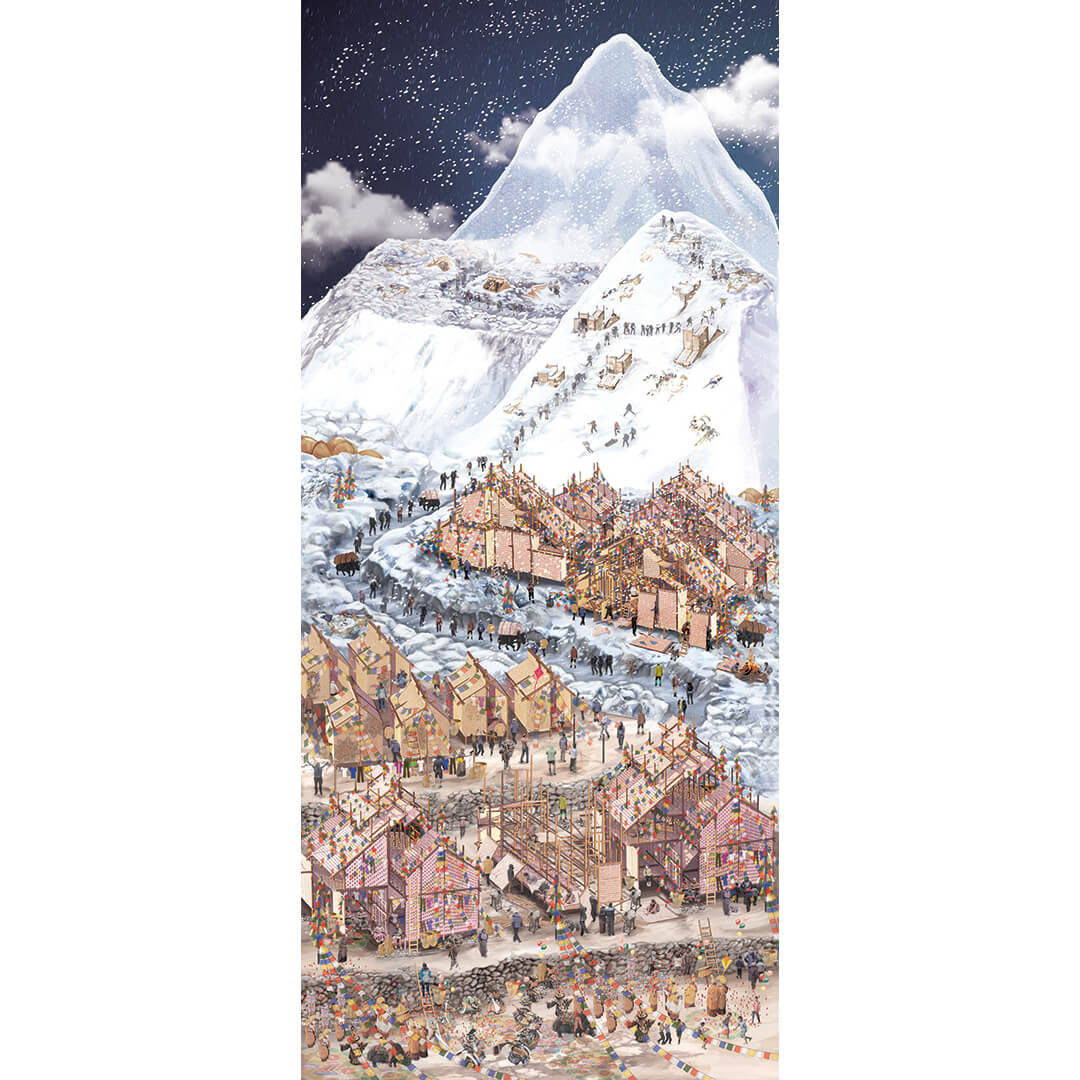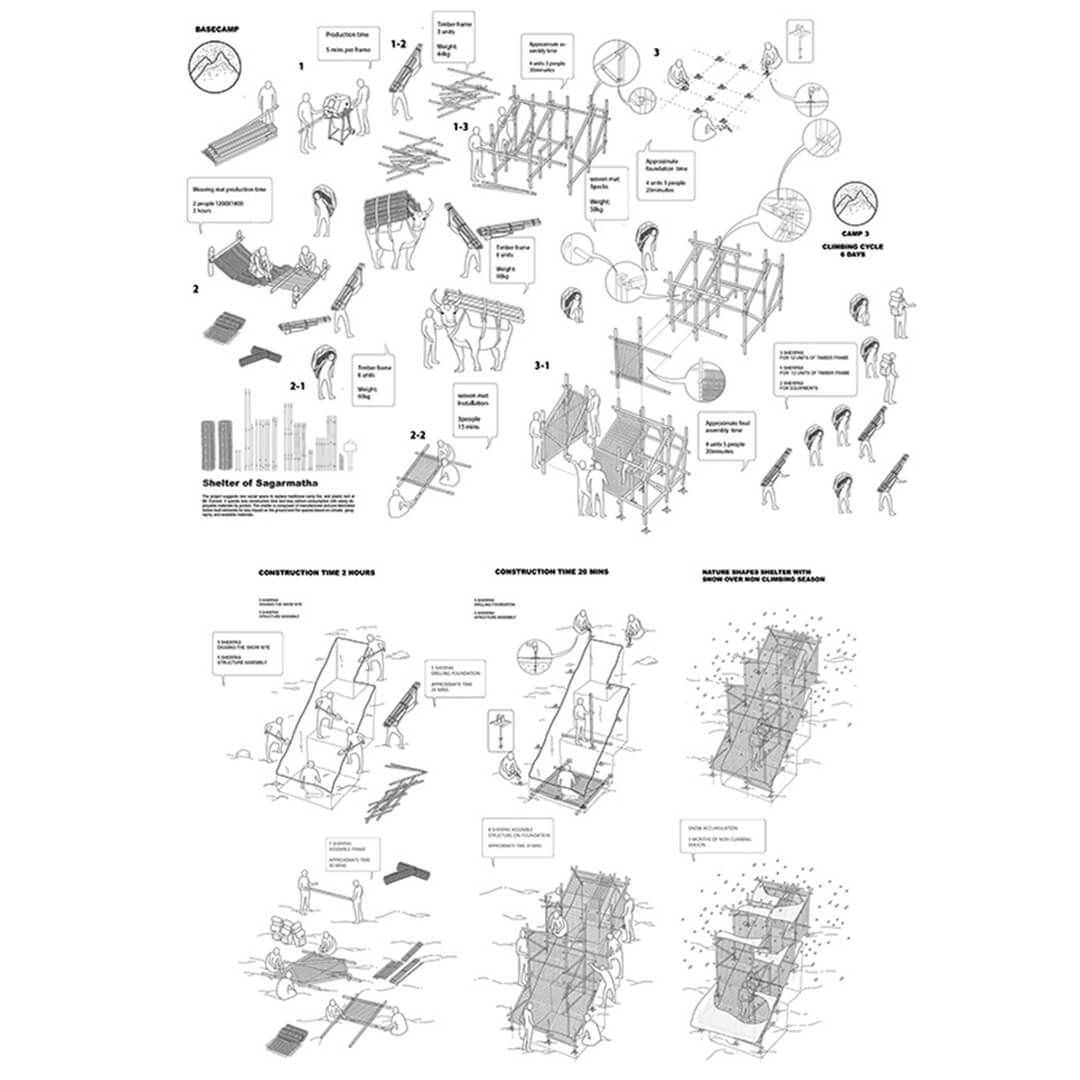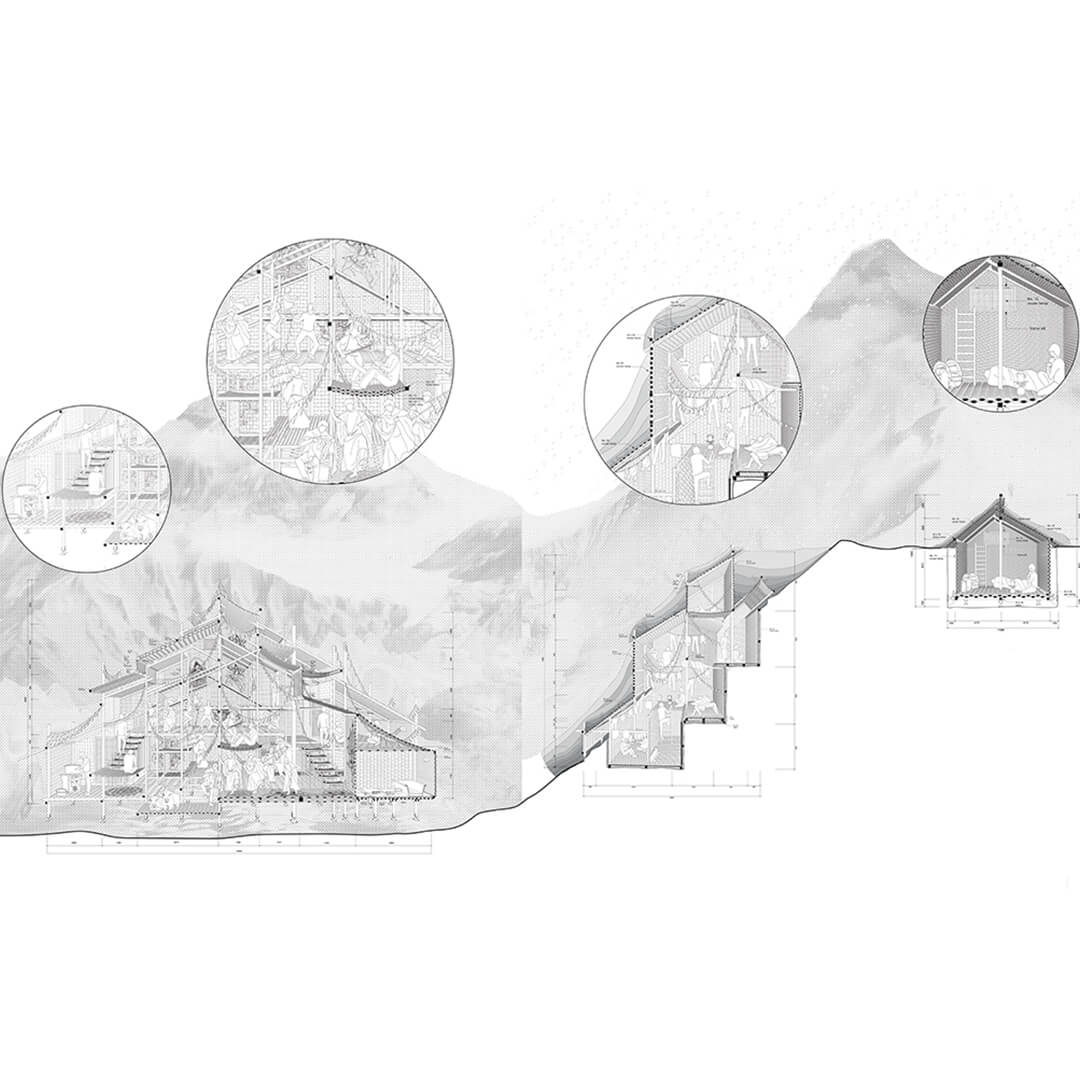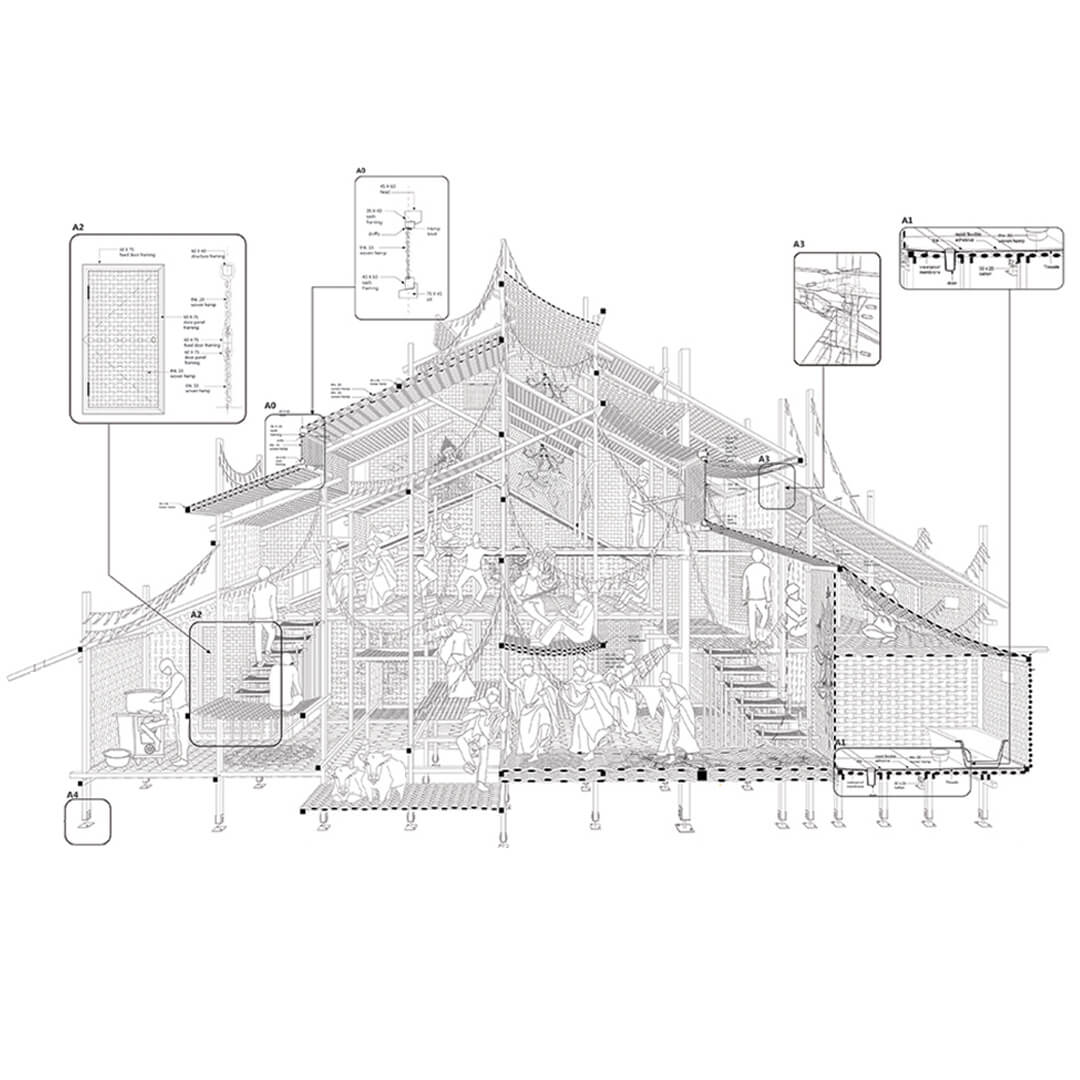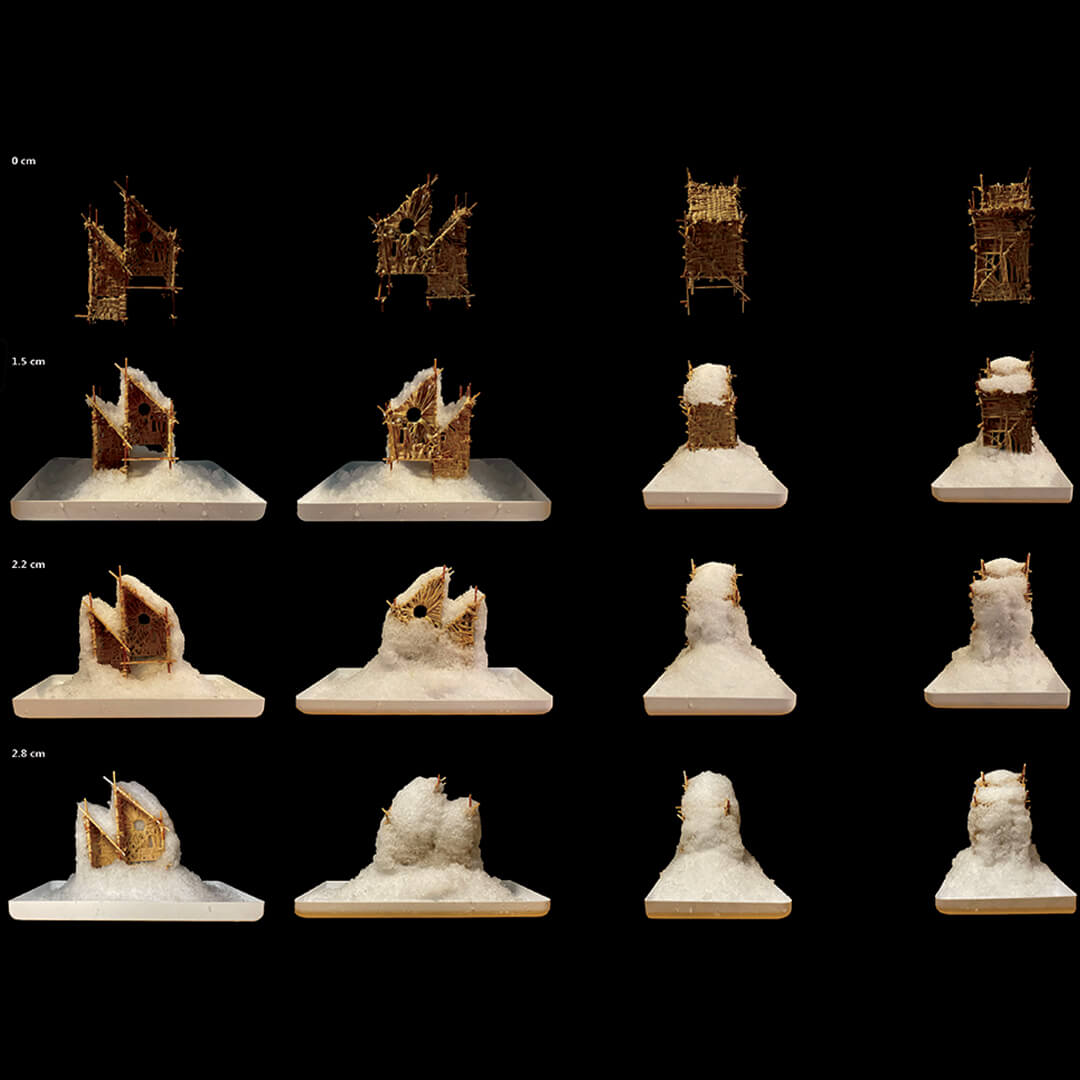Youngbin Shin
The project proposes the shelter for the new type of social space to replace traditional tents at Mt. Everest which also can value in the lives of locals with using natural materials as building envelop.
It creates a relaxing and cold-resistant shelter with the use of natural materials, snow, in the unforgiving freezing climate in order to enhance human comfort to acceptable levels with local materials, reduced construction time and less carbon consumption with easily deployable materials by porters. The Everest and local villages have the issue of hiking tourism causing the environmental stress. The project responds to issues with offering local the structures by indigenous material and engaging them to self-build for the new Everest habitat.
The shelter is composed of manufactured and prefabricated timber-built elements for less impact on the ground and the spaces based on climate, geography, and available materials. During non-climbing season, the shelter is shaped by nature to get ready for climbers’ visit in climbing season. The tectonic timber module holds snow as a building skin and thermal insulation. Spaces are configured based on the learning from vernacular architectures for providing the relation between compactness of space and its thermal performance in snow-built structures.
The built element transforms according to seasons, usage, and the camp spot; it turns to a cold resistant shelter, a landmark for mountaineer, a resting space for Sherpas, and gathering space for all. While isolated in extreme climates, social interaction becomes an important component in surviving nature’s peril, therefore, project suggests the shelter which can provide a community for weary visitors.
Author: Youngbin Shin.
Website: youngbin-shin.com
Location: Everest, Nepal.
University: AA school.
Year: 2020
